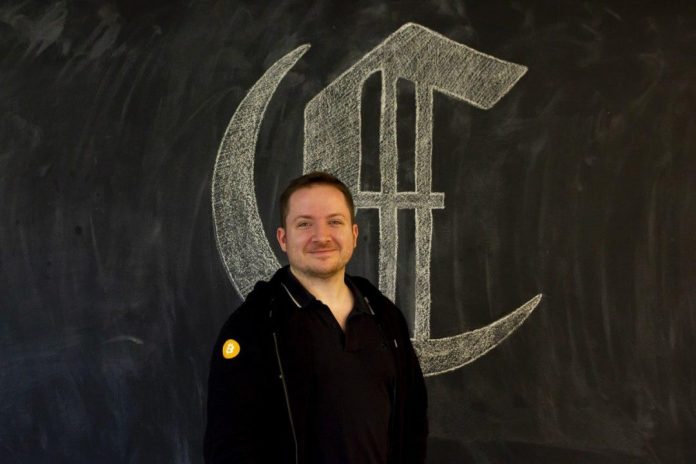A few weeks ago Giacomo Zucco held a YouTube live Q&A for Cryptonomist in which he answered many questions from the readers, but not all.
In the first part of the interview – published two weeks ago and realised by collecting these questions – Zucco talked about RGB and Lightning Network, and in the second part, he expressed his opinion about Stellar Lumens and Cardano.
In this third part, he talks about MimbleWimble and Grin.
What is your opinion about MimbleWimble and Grin?
My view of MimbleWimble is very positive. MimbleWimble has a very elegant and beautiful design. If the technology behind MimbleWimble had been field tested and found safe before Bitcoin I wouldn’t have regretted if Bitcoin had used this very elegant way of mixing binding and hiding. However, in turn, this design creates the need to develop some other choices, such as the client-side-validated model and the “scriptless-script” contracts, which are, on the one hand, more complex and difficult to develop and adopt, but on the other, much more secure, private and scalable than the models adopted in Bitcoin.
MimbleWimble guarantees excellent anonymity at the basic level and has some small (and often exaggerated by those who talk about it) advantages of scalability. Privacy is very good because it allows concealing both who is sending the payments and the amount involved. Scalability is slightly better in the sense that it is possible to compact the history of global consensus. There is no real blockchain, there is a chain of objects called Kernels that can be compacted by bypassing some circular steps of payment. Thus it is a very good design.
Moreover, the way in which this design has been promoted is very beautiful from an ideological point of view, because as in the case of Satoshi Nakamoto, it appeared on the Internet from an anonymous source, attracting the attention of leading experts, in order to undergo a strict peer review. A very elaborate and refined idea, without launching an ICO, without asking for money, without promoting products, sharing the knowledge on the subject and from there the MimbleWimble protocol has been worked on by many people, especially the Blockstream researcher Andrew Poelstra but also others who started to analyze and expand the idea.
Furthermore, Andrew’s contribution is very important because the protocol initially proposed by the pseudonym, which called itself with the French name of Lord Voldemort taken from Harry Potter’s books, could not support Lightning Network (which already represents the main perspective of privacy and scalability for Bitcoin). It couldn’t actually support any kind of script, i.e. smart contracts, whereas Andrew Poelstra not only refined, fixed and improved the encryption of MimbleWimble but also added the possibility of making (“scriptless”) complex scripts, which theoretically allow using Lightning Network on MimbleWimble.
And so definitely a fantastic research project.
I am, however, very sceptical about attempts to turn it into a production project at the moment. Consider that neither the creator of MimbleWimble, which then disappeared, nor the main researchers such as Andrew Poelstra who developed the most complex parts, have ever launched an altcoin based on this design, because what they are waiting to do is either, in the very distant future, to add it to Bitcoin with a system called extension blocks, or in a shorter time to test it on Bitcoin’s sidechains.
In order to experiment with a new architecture, it is not necessary to launch a new economic asset; on the contrary, it would be decidedly better not to do so from different points of view: to avoid adding the uncertainty of an economic test to the experimentation of an infrastructure. So Andrew Poelstra and other MimbleWimble researchers are waiting to try MimbleWimble on Bitcoin’s sidechain.
MimbleWimble will arrive on Liquid, eventually, which is a federated sidechain. And then later it could reach other types of sidechains. There is already a test on an experimental testnet sidechain called Elements Alpha.
In contrast, Grin is an attempt to launch a new altcoin, something of which I am generally sceptical from an economic point of view as is already known. In addition, there are other things about Grin that make me quite sceptical in particular, such as the specific monetary policy in which there’s high inflation. Grin’s inflation will not fall below the level of the current US dollar inflation for more than 50 years, while bitcoin will have inflation lower than the US dollar as early as next year, 10 years after its creation, so Grin is a very inflated currency. Which is not a good idea in my opinion in terms of economic theory.
Furthermore, from a Proof of Work point of view, it is a rather unusual move to mix ASIC resistant algorithms with ASIC friendly algorithms. That said, Grin’s team is one of the ones that in my opinion are working on an altcoin that has at least a scientific and technical interest. Another example is Monero. Grin is interesting to see as an experiment, although I would advise against its use in production by anyone, however, it is definitely a scientific experiment worth following. I think I’ll keep a close eye on it, unlike further implementations of MimbleWimble, such as BeamMW, which I find less interesting.



